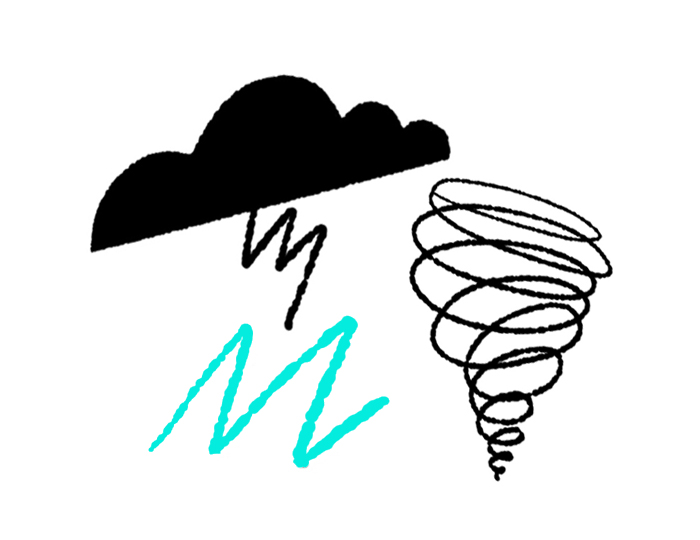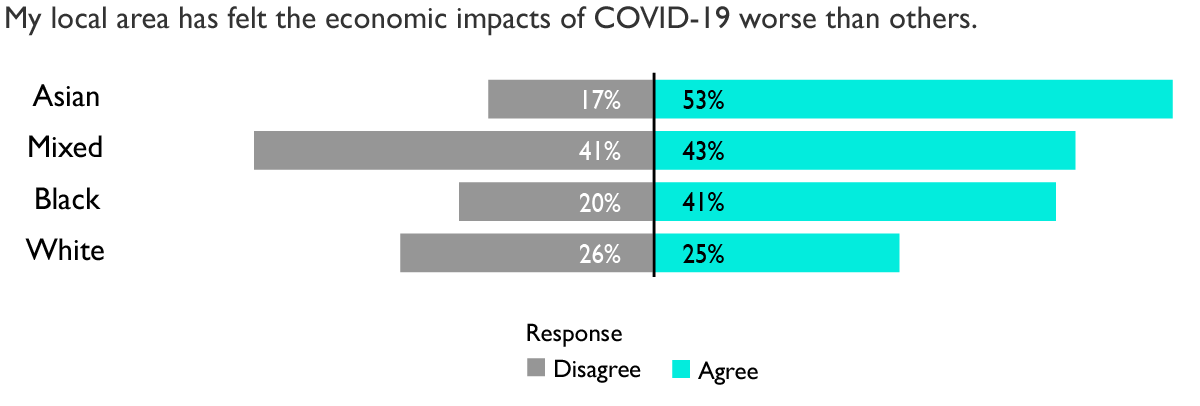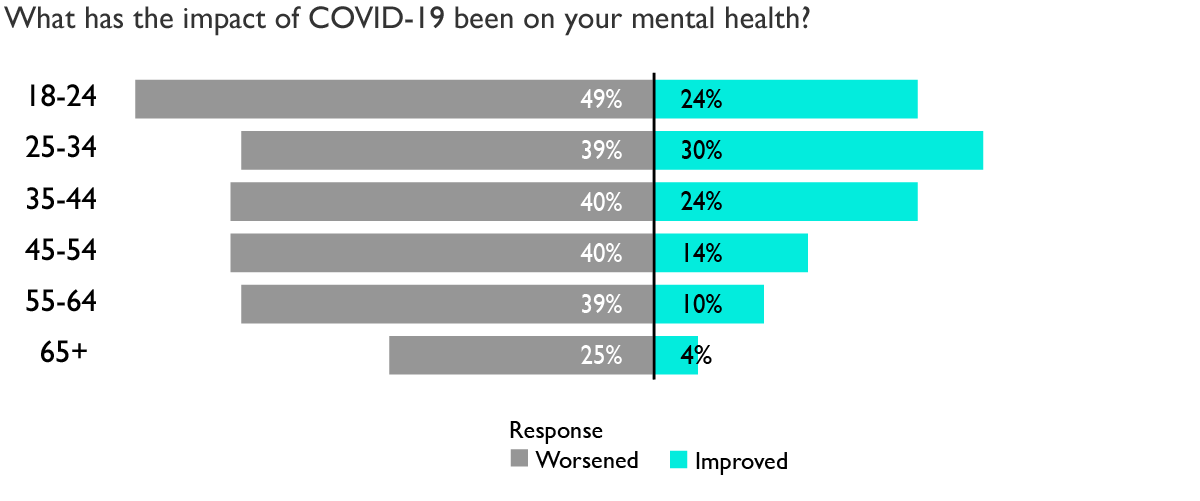Different crises
Where do you see compounding crises and how are these playing out in different communities?
Where do you see compounding crises and how is this playing out in different communities?
We are experiencing a range of emotional responses to the pandemic as time goes by. For many, this is layered on top and directly connected to existing crises – of racial justice, climate crisis, poverty or flooding.
The pandemic has amplified these existing crises, reinforcing that we are all part of a complex living interconnected system. The long-term consequences of these crises are unknowable.

Ice is melting and revealing deeper layers... Black Lives Matter, it was always there, but issues have surfaced
“For us, the Muslim Youth Helpline, the change has been the rise in calls coming into the helpline. Not just the rise but also the nature of calls, a lot more safeguarding concerns. As a helpline we get all sorts of calls coming into the helpline, but the severity heightened in 2020.”
Maaria Mahmood, Director, Muslim Youth Helpline
“People’s priorities are not having the vaccine, people’s priorities are the mental health impacts, these lost jobs... that's the priorities not the vaccine”
Samira Ben Omar, Co-founder of Community Voices in West London
“In the summer, we saw a huge, huge rise in the calls around suicide ideology. And that skyrocketed and it hasn't completely dropped to normal levels and actually calls around suicide continue to grow. But the summer was definitely a peak in that.”
Maaria Mahmood, director, Muslim Youth Helpline
“We have designed the ultimate treadmill, that is not resilient to unexpected crisis. Nor are our systems tackling a full range of problems we had prior to this pandemic, including the climate emergency.”
Tessy Britton, founder, Participatory City Foundation
“Some communities are suffering more than others, and especially prisoners...Where is the emotional connection, where can we build on the compassion for isolation that prisoners feel.”
Paula Harriot, head of prisoner involvement, Prison Reform Trust
“For many of the most marginalised crisis is normal and they are well equipped to self-help - given access to funds and resources - they do not need to be 'rescued' by those for whom crisis is new.”
Paula Harriot, head of prisoner involvement, Prison Reform Trust
The economic impact of CV-19 has been felt to a different extent by members of different ethnic groups.
53% of Asian respondents reported that they felt the economic impact on their local area worse than others. This is more than double that of white populations.

A high percentage of people reported their mental health had worsened during the pandemic (37%). This was seen across all age groups, but younger populations were the most likely to report this (49% of those aged 18-24).

“The everyday, ongoing life of the society is usually equated with the normal, and those conditions that result from disaster are viewed as abnormal and pathological. However, in our haste to draw this distinction, we often conveniently overlook the many sources of stress, strain, conflict, and dissatisfaction that are imbedded in the nature of everyday life.”
Charles Fritz, Disasters and Mental Heath
“People in prisons are at an increased risk of Covid-19, with a death rate more than three times higher than that of the general population, and should be made a vaccine priority, according to public health experts... The higher rate of death comes despite extensive physical distancing measures, including prisons keeping many inmates in their cells for 23 hours a day.”
Artice in The Guardian
Where do you see compounding crises and how are these playing out in different communities?
Where and how has the pandemic exacerbated existing issues?
Is it a concern that so much funding has been found by government - yet universal credit has only been temporarily uplifted by £20 and it took a sustained campaign to extend free school meals?
Are there any specific temporary measures you’ve seen put in place that would cause you concern if they became the norm?
How are you finding resilience through transition to cope with discomfort and uncertainty?
Where are you seeing energy for change emerge? How can you add to it?